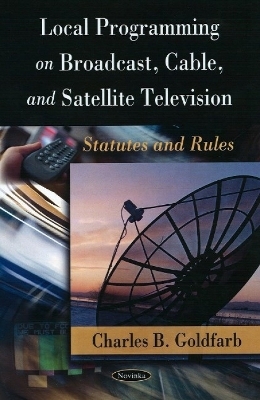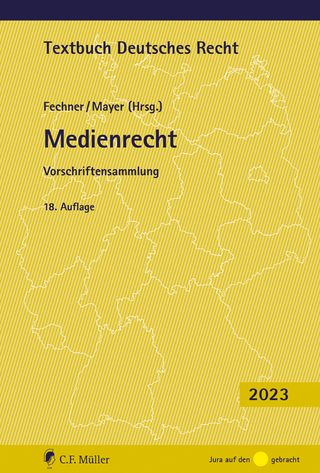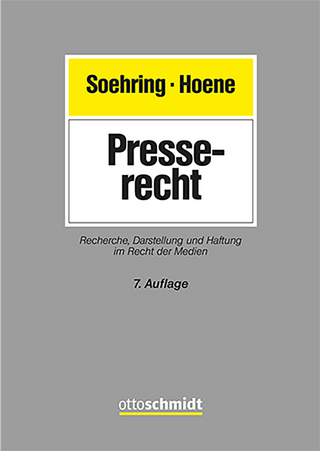
Local Programming on Broadcast, Cable & Satellite Television
Statutes & Rules
Seiten
2008
Nova Science Publishers Inc (Verlag)
978-1-60456-276-7 (ISBN)
Nova Science Publishers Inc (Verlag)
978-1-60456-276-7 (ISBN)
A report that provides, for the various states of US, county-by-county data on the percentage of television households located in television markets outside the state and whether there are any in-state stations serving those households.
Most broadcast television stations' viewing areas extend far beyond the borders of their city of license, and in many cases extend beyond state borders. Under existing FCC rules, which are intended to foster "localism," the licensee's explicit public interest obligation is limited to serving the needs and interests of viewers within the city of license. Yet, in many cases, the population residing in the city of license is only a small proportion of the total population receiving the station's signal. Hundreds of thousands of television households in New Jersey (outside New York City and Philadelphia), Delaware (outside Philadelphia), western Connecticut (outside New York City), New Hampshire (outside Boston), Kansas (outside Kansas City, Missouri), Indiana (outside Chicago), Illinois (outside St. Louis), and Kentucky (outside Cincinnati) have little or no access to broadcast television stations with city of license in their own state. The same holds true for several rural states ? including Idaho, Arkansas, and especially Wyoming, where 54.55% of television households are located in television markets outside the state. Although market forces often provide broadcasters the incentive to be responsive to their entire serving area, that is not always the case. This report provides, for each state, detailed county-by-county data on the percentage of television households located in television markets outside the state and whether there are any in-state stations serving those households. The Nielsen Designated Market Areas ("DMAs") also often extend beyond state borders. Local cable operators are required to carry the broadcast signals of television stations located in their DMA. If they are located in a DMA for which the primary city is in another state, and most or all of the television stations in that DMA have city of license in the other state, then the broadcast television signals they must carry will be primarily or entirely from out of state. In some cases, they may not be allowed to carry signals from within the state but outside the DMA to provide news or sports programming of special interest in their state because of network non-duplication, syndicated exclusivity, or sports programming blackout rules or because of private network affiliation contract agreements, or may be discouraged to do so because these signals do not qualify for the royalty-free permanent compulsory copyright license for local broadcast signals. The Satellite Home Viewer Extension and Reauthorization Act of 2004 expanded the scope of in-state television signals that satellite operators are permitted (and in some cases required) to offer subscribers. In addition to the signals of those broadcast television stations with city of license within the DMA in which the subscriber is located ("local-into-local" service), satellite operators may offer (subject to certain restrictions) signals from outside the DMA if those signals are "significantly viewed" by those households in the subscriber's geographic area that only receive their broadcast signals over-the-air (not via cable or satellite). In addition, satellite operators may offer certain subscribers located in New Hampshire, Vermont, Mississippi, and Oregon certain in-state signals from outside the subscribers' DMA and must offer subscribers in Alaska and Hawaii certain in-state signals.
Most broadcast television stations' viewing areas extend far beyond the borders of their city of license, and in many cases extend beyond state borders. Under existing FCC rules, which are intended to foster "localism," the licensee's explicit public interest obligation is limited to serving the needs and interests of viewers within the city of license. Yet, in many cases, the population residing in the city of license is only a small proportion of the total population receiving the station's signal. Hundreds of thousands of television households in New Jersey (outside New York City and Philadelphia), Delaware (outside Philadelphia), western Connecticut (outside New York City), New Hampshire (outside Boston), Kansas (outside Kansas City, Missouri), Indiana (outside Chicago), Illinois (outside St. Louis), and Kentucky (outside Cincinnati) have little or no access to broadcast television stations with city of license in their own state. The same holds true for several rural states ? including Idaho, Arkansas, and especially Wyoming, where 54.55% of television households are located in television markets outside the state. Although market forces often provide broadcasters the incentive to be responsive to their entire serving area, that is not always the case. This report provides, for each state, detailed county-by-county data on the percentage of television households located in television markets outside the state and whether there are any in-state stations serving those households. The Nielsen Designated Market Areas ("DMAs") also often extend beyond state borders. Local cable operators are required to carry the broadcast signals of television stations located in their DMA. If they are located in a DMA for which the primary city is in another state, and most or all of the television stations in that DMA have city of license in the other state, then the broadcast television signals they must carry will be primarily or entirely from out of state. In some cases, they may not be allowed to carry signals from within the state but outside the DMA to provide news or sports programming of special interest in their state because of network non-duplication, syndicated exclusivity, or sports programming blackout rules or because of private network affiliation contract agreements, or may be discouraged to do so because these signals do not qualify for the royalty-free permanent compulsory copyright license for local broadcast signals. The Satellite Home Viewer Extension and Reauthorization Act of 2004 expanded the scope of in-state television signals that satellite operators are permitted (and in some cases required) to offer subscribers. In addition to the signals of those broadcast television stations with city of license within the DMA in which the subscriber is located ("local-into-local" service), satellite operators may offer (subject to certain restrictions) signals from outside the DMA if those signals are "significantly viewed" by those households in the subscriber's geographic area that only receive their broadcast signals over-the-air (not via cable or satellite). In addition, satellite operators may offer certain subscribers located in New Hampshire, Vermont, Mississippi, and Oregon certain in-state signals from outside the subscribers' DMA and must offer subscribers in Alaska and Hawaii certain in-state signals.
Preface; Introduction; Broadcast Television; Cable Television; 'Must Carry' Rules; Other Federal Rules and Laws; Flexibility in the Rules; The Digital Transition and Local Programming; Local Franchise Requirements; Summary of Factors Affecting Local Programming on Cable; Satellite Television; Issues for Congress; Broadcaster Obligations within the City of License; Broadcaster Obligations Beyond the City of License; Broadcaster Obligations and Multicasting; Increasing the Flexibility of Cable Carriage Rules; Increasing the Flexibility of Satellite Local-into-Local Programming; Bills Introduced in the 110th Congress; Index.
| Zusatzinfo | Illustrations |
|---|---|
| Verlagsort | New York |
| Sprache | englisch |
| Maße | 215 x 140 mm |
| Gewicht | 154 g |
| Themenwelt | Recht / Steuern ► EU / Internationales Recht |
| Recht / Steuern ► Privatrecht / Bürgerliches Recht ► Medienrecht | |
| Sozialwissenschaften ► Kommunikation / Medien ► Journalistik | |
| ISBN-10 | 1-60456-276-5 / 1604562765 |
| ISBN-13 | 978-1-60456-276-7 / 9781604562767 |
| Zustand | Neuware |
| Haben Sie eine Frage zum Produkt? |
Mehr entdecken
aus dem Bereich
aus dem Bereich
Recherche, Darstellung und Haftung im Recht der Medien
Buch | Hardcover (2024)
Verlag Dr. Otto Schmidt KG
129,00 €
Lehrbuch des gesamten Medienrechts unter besonderer Berücksichtigung …
Buch | Softcover (2023)
UTB (Verlag)
22,00 €


